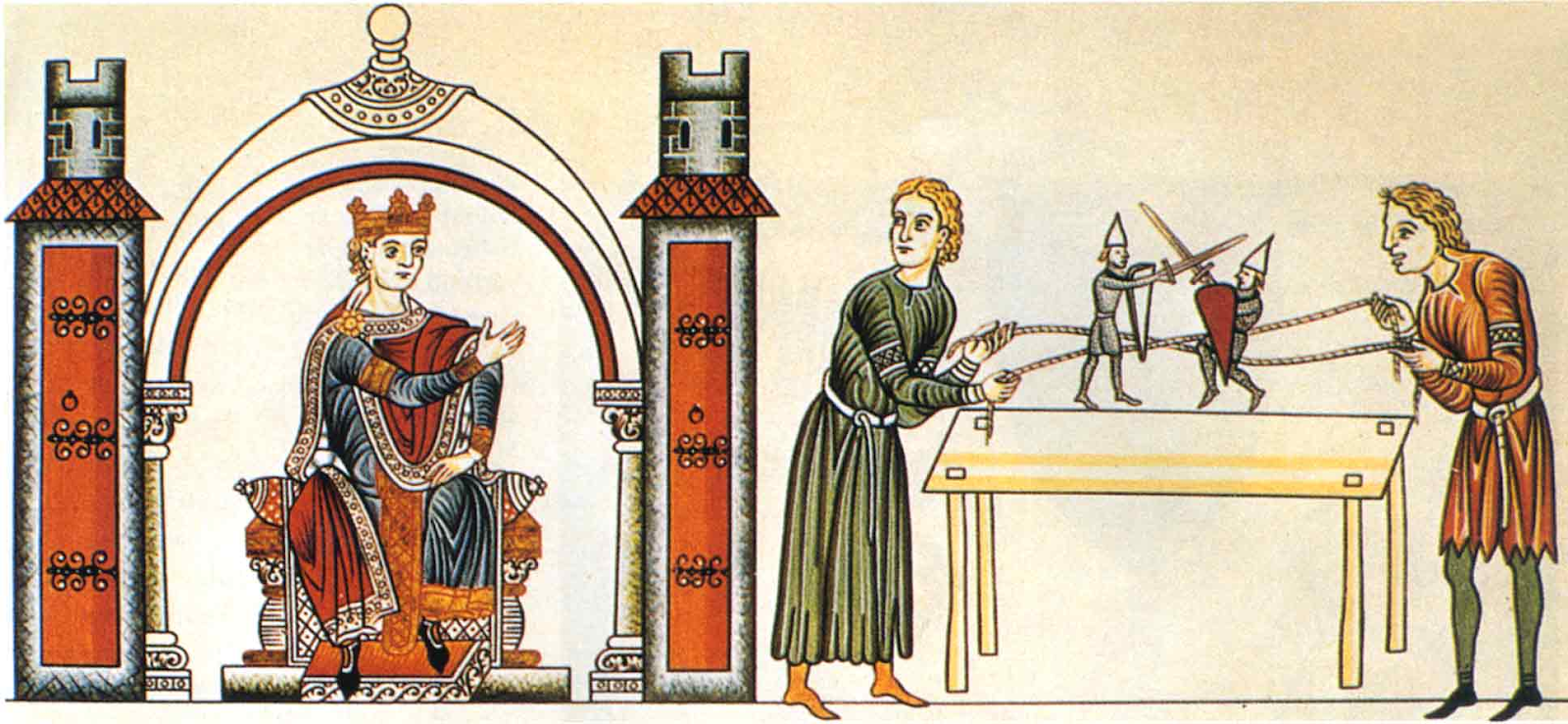Toys and children's games can be a fun and interesting piece of your worldbuilding and lore-building puzzle, allowing people to feel a connection to fun and sentimental moments within the societies you have constructed.
Take the pewter knight on display at the Muesum of London, for example. This is one of the earliest examples of a mass-produced toy, at the time it came out it would have been relatively rare and a signal that the world was changing to allow such mass production, and that wealth was growing to the point where multiple parents could buy such toys for their children. As with today's concern about video games, there may very well have been concerns about children receiving such gifts and talk of wasteful spending. Certainly, there were concerns about the inordinate amount of time children spent reading in the early days of chapbooks and penny dreadfuls.
 |
The Walters Art Museum, Baltimore
Medieval toy knight from about 1300 |
More than this, however, how a children in your world plays with toys, and what toys are available can help show bits of your world's history or current political climate.
In the Medieval most of the knights for children to play with were on horseback, despite the fact that making these horses required more metal and more work to create. Obviously, peasant children at the end of the Medieval and into the Early Modern dreamed of being knights, rather than foot soldiers or archers. This makes sense, but only because most of us know enough about history to know that knights were the cool heroes of stories.
Imagine a world in which archers were the most popular toys, as might have been the case in early Japan, when samurai used bows more frequently than swords. Or a world where wizards, griffin riders, warrior clerics, are greater than knghts.
If there are a lot of 5e style druids in your world, horses might only be used for logistics, as it would be far too easy for a druid to get horses to throw their riders and cause chaos in the ranks of those who they are supposed to be helping. In such a world horse rider would be the boring job in the military and children might dream of being foot soldiers. The point is, the toys children play with, while a background element could help you include interesting bits of lore in your world that get people to think.
A simple scene of a mother buying something for a child, or child pleading for them to buy something can be used as a way of letting the characters know what is important in a village.
Market stalls being on the street can provide the player's many opportunities to overhear conversations and see things that can contribute to their understanding of the world.
Knight Puppets for fighting around the end of 12th century
Just as interesting for lore-building are children's rhymes. According to one theory for example, the rhyme "London Bridges Falling Down" comes from a song about a Viking raid which goes;
London Bridge is broken down. —
Gold is won, and bright renown.
Shields resounding,
War-horns sounding,
Hild is shouting in the din!
Arrows singing,
Mail-coats ringing —
Odin makes our Olaf win!
While this as the origin of the other song is debatable, both rhymes are interesting and can potentially point to interesting history and so can make for fun background elements.
You can see a few more links to Medieval toys below.
You can also see a 14th century example of a ceramic knight at
https://previous.bildindex.de/bilder/MI07850c07a.jpg
A fancier version of you knights, likely owned by the children of the king Maximilian I in 1500 can be seen
here
















0 comments:
Post a Comment